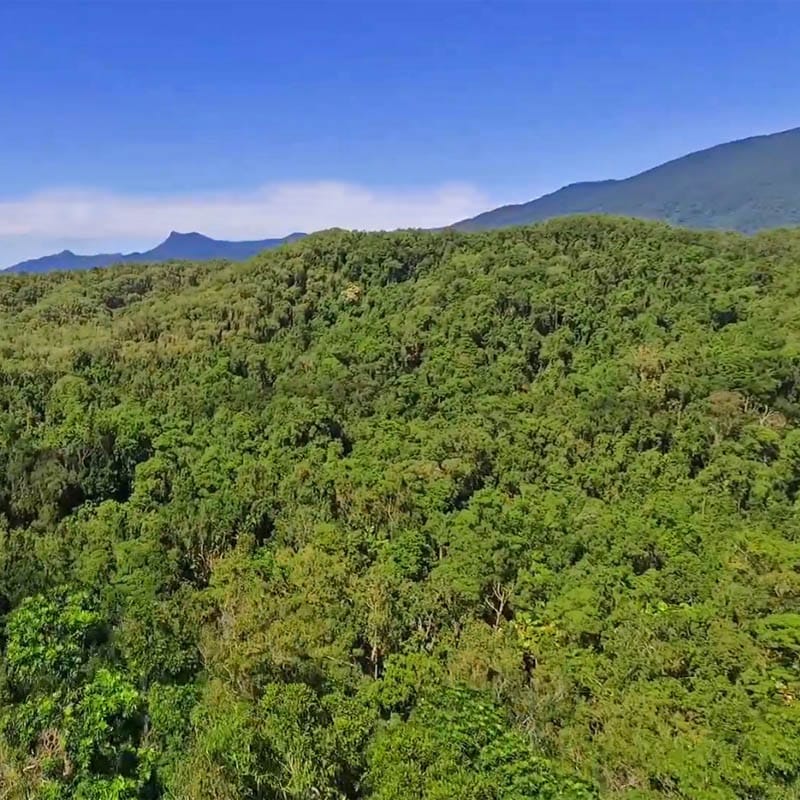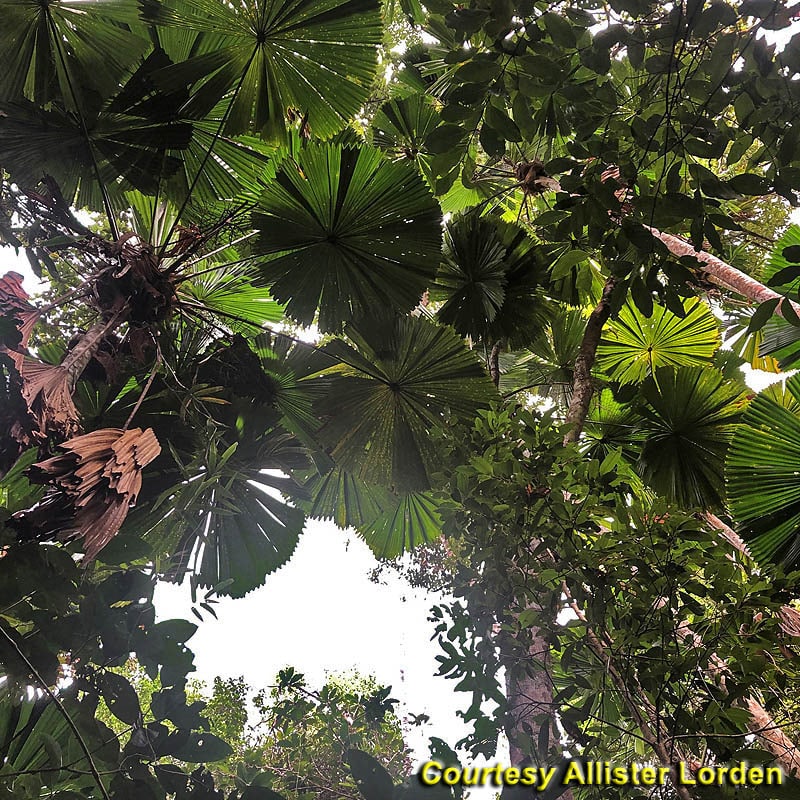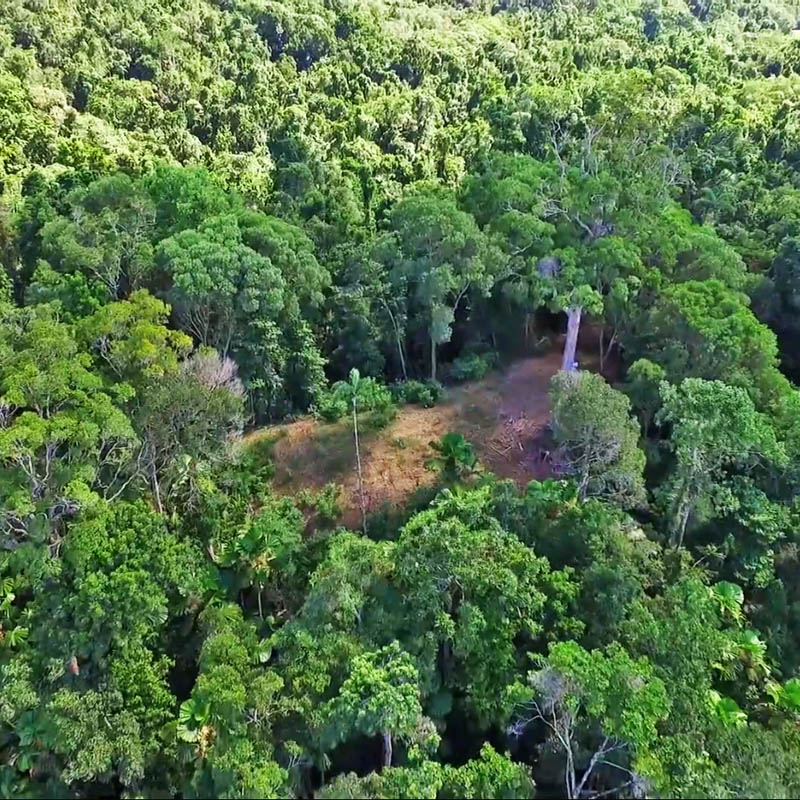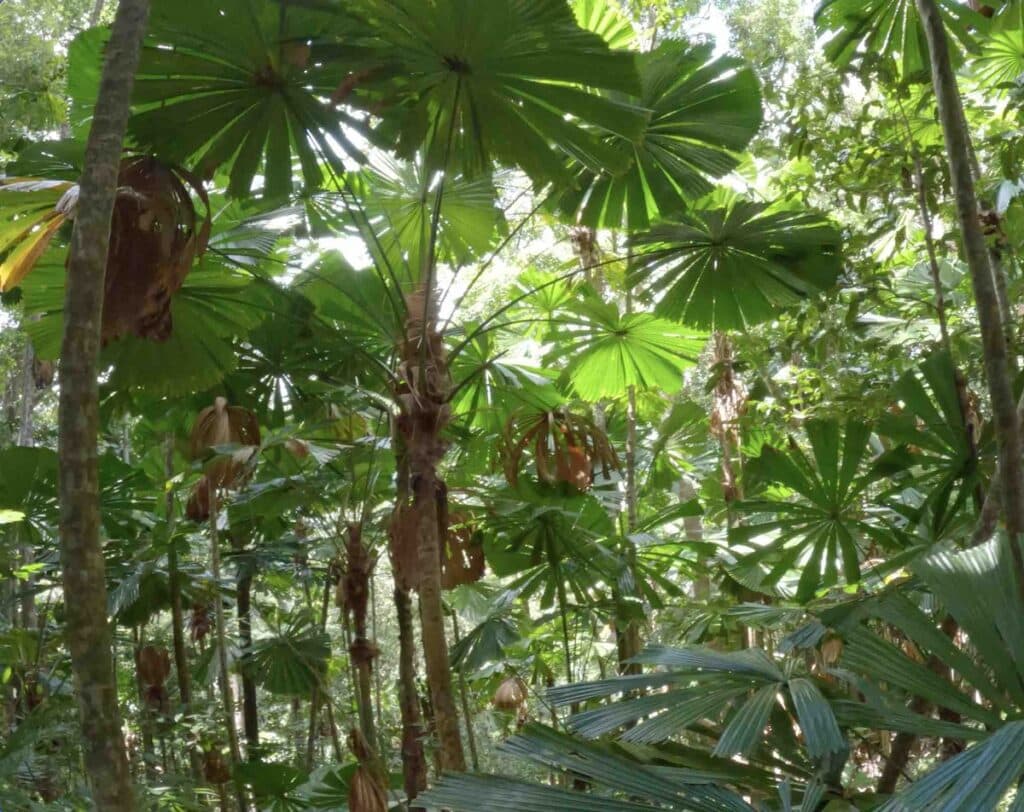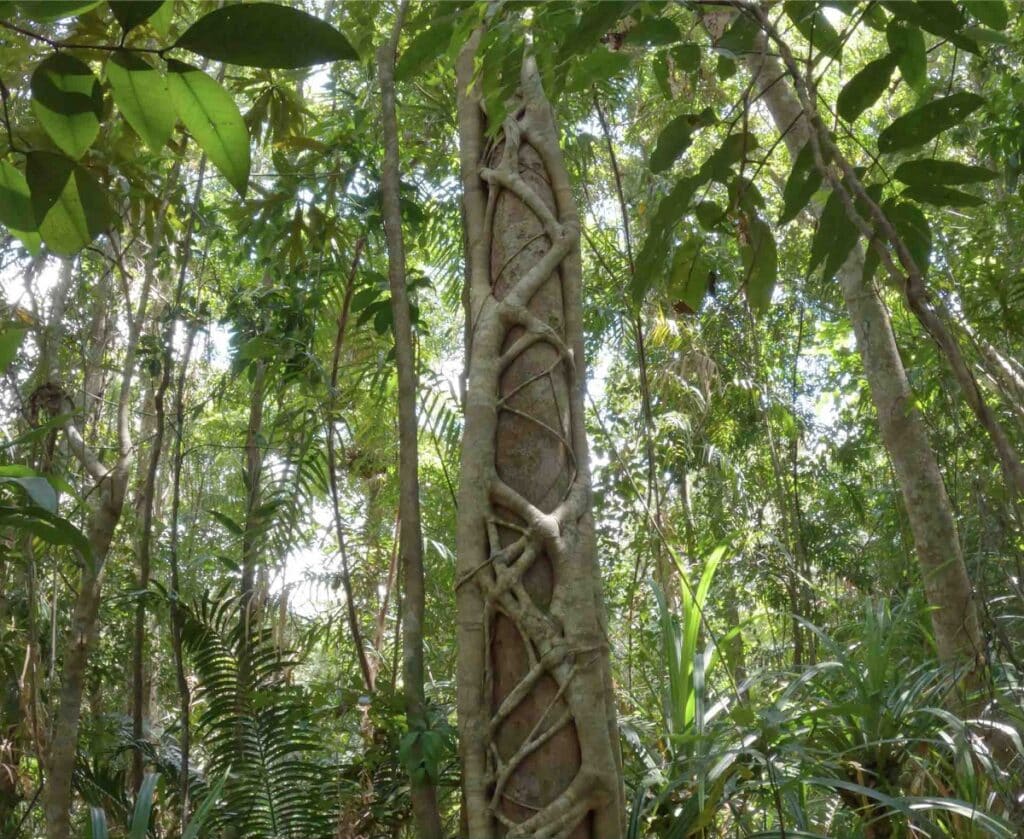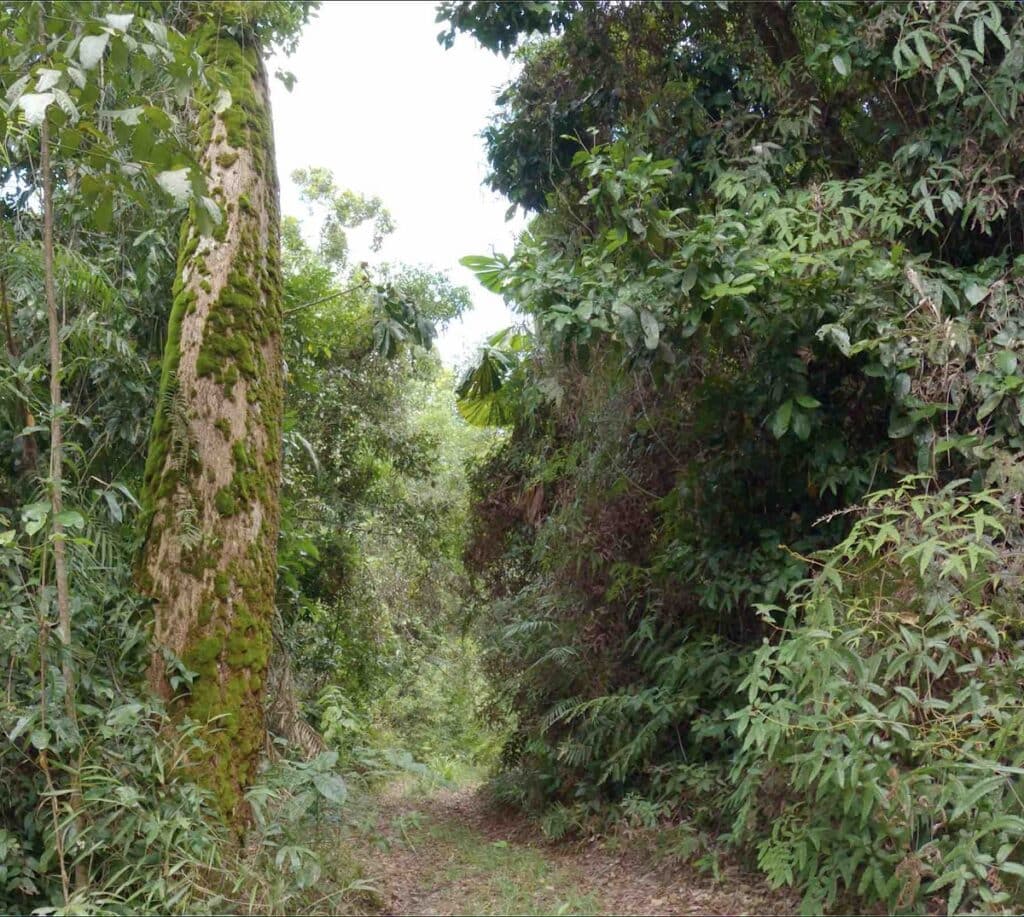Situated in Whyanbeel Parish, approximately 90km north of Cairns, Queensland, Maraverde Nature Refuge is easily accessed by road from the nearby town of Mossman. More information about the property can be found here: https://youtu.be/qb2sJMZGMwI
Outstanding for its extensive size (65 hectares, or 165 acres) and fully forested state, the sanctuary’s name is a combination of the Spanish words “Maravilla,” meaning Magnificent, and “Verde,” primarily meaning Lush-Teeming-Green.
Despite its long, historically private ownership, the sanctuary’s predominant covering of highly biodiverse, lowland tropical rainforest has remained remarkably intact and undamaged. This was, therefore, the primary incentive for Michael and Maria Parsons to purchase the property.
Such lowland tropical rainforest habitat is globally significant, being among the world’s rarest and most irreplaceable ecosystems. It requires, therefore, the utmost protection. Because of this, Australia’s lowland rainforests of the wet tropics were recently listed as “Endangered” by the Federal Government under the 1999 Environmental Protection & Biodiversity Conservation (EPBC) Act. Maraverde is protected in-perpetuity as a Nature Refuge, and the owners will eventually bequeath the property for its permanent inclusion and preservation within the Daintree National Park system.
Physically contiguous with the Daintree National Park, Maraverde is crossed by several large and pristine, permanent creeks. Its northern two-thirds comprise lowland rainforest, whilst its southern one-third consists of mature eucalypt stands, interspersed with rainforest species, mainly along the riparian zones.
In order to work with local and global researchers, schools and universities, it is planned to establish a modest biodiversity research facility on the property. Various on-site ecological research will then be implemented, including the use of camera traps, drones, and other such equipment. The resultant digital imagery and other such data will be used to compile comprehensive faunal and floral surveys and to research specific species.
Maraverde’s highly biodiverse forest is home to a wide range of native plants and animals. For example, the indigenous and localised Spear-leaved Pipevine (Pararistolochia sparusifolia) is notable among its many important tree and vine species. A foodplant of the giant Cairns Birdwing butterfly (Ornithoptera priamus) caterpillars, the liana was newly described in 1996 by Dr Parsons as part of his comprehensive taxonomic review of these vines. In Australia, New Guinea and Africa, pipevines are important indicator species, denoting tropical primary forests that are both truly ancient and highly species-rich.
Maraverde’s complex vertebrate fauna includes the spotted-tailed quoll (Dasyurus maculatus gracilis), musky rat-kangaroo (Hypsiprymnodon moschatus), platypus (Ornithorhynchus anatinus), rainforest sunskink (Lampropholis coggeri), estuarine crocodile (Crocodylus porosus), graceful tree-frogs (Litoria gracilenta), marbled frogs (Limnodynastes convexiusculus), and diamondfish (Monodactylus argenteus).
The sanctuary’s array of birds is equally spectacular, including the southern cassowary (Casuarius casuarius johnsonii), Victoria’s riflebird (Ptiloris victoriae), golden bowerbird (Amblyornis newtonianus), yellow-billed spoonbill (Platalea flavipes), rainbow bee-eater (Merops ornatus), forest (Todiramphus macleayii) and sacred (T. sanctus) kingfishers, grey goshawk (Accipiter novaehollandiae) and orange-footed scrubfowl (Megapodius reinwardt).

